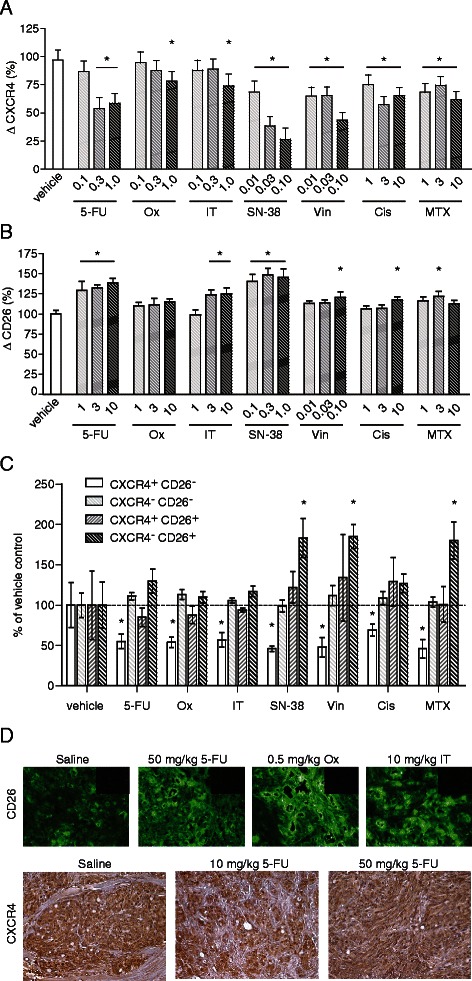Fig. 1.

Anticancer agents decrease CXCR4 while increasing CD26 expression in the HT-29 cell line. HT-29 cells were treated with chemotherapeutic drugs (μg/mL) and stained for flow cytometry analysis of CXCR4 (a; mean % change in CXCR4 expression from vehicle control ± SE, n = 3; *, P < 0.01 by two-way ANOVA) or CD26 (b; mean % change in CD26 expression from vehicle control ± SE, n = 6; *, P < 0.05 by two-way ANOVA). c Dual-stain of CXCR4 and CD26 following drug treatment (5-FU = 1, Ox = 1, IT = 1, SN-38 = 0.1, Vin = 0.1, Cis = 1, MTX = 1 μg/mL; mean % of each population following vehicle control, n = 5; *, P < 0.01 by two-way ANOVA). d Mice (nu/nu) with HT-29 colorectal tumors growing within the large intestine were treated with saline, 10 or 50 mg/kg 5-FU, 0.5 mg/kg Ox, or 10 mg/kg IT four and two days before the tumors were harvested. Tumor sections were immunostained using anti-CD26 antibody or isotype control antibody (inserts); or are shown with peroxidase-stained CXCR4 with a hematoxylin counterstain. Representative images of four mice per group
